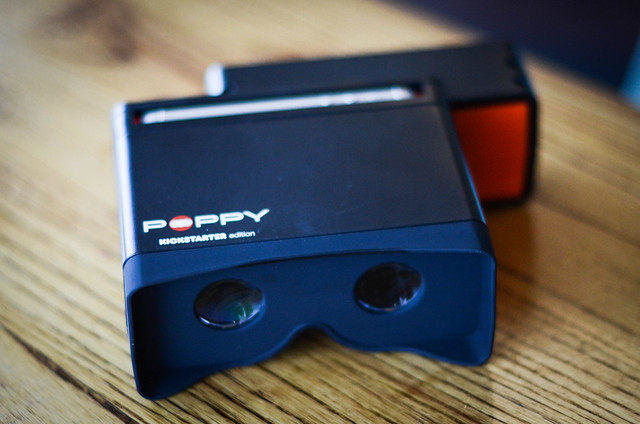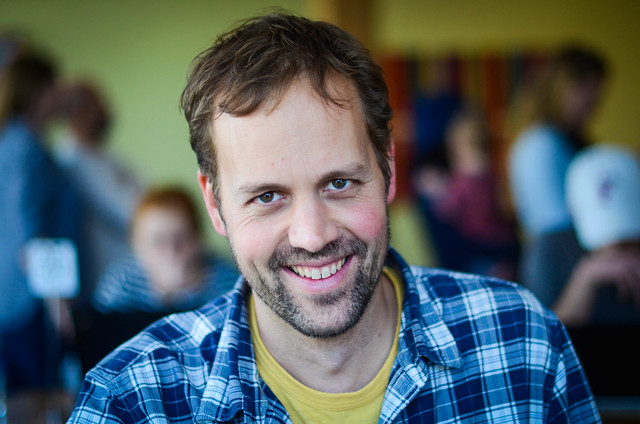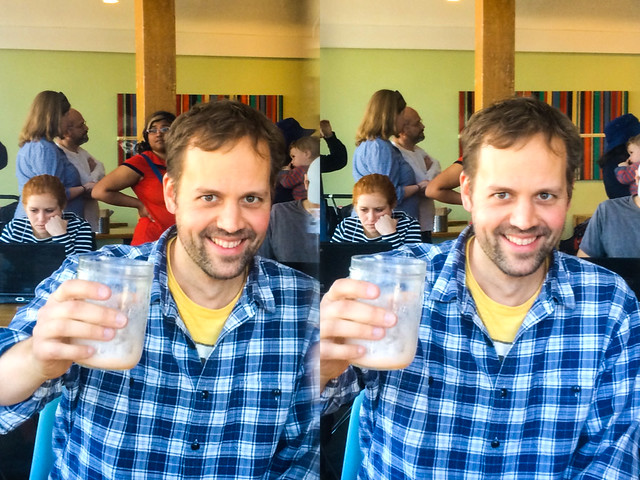We’re starting a new series showing you some of the many incredible things that are coming out of the maker movement that relate to photography. While creating photography tools and hardware was for the longest time only in the realm of relatively large companies, crowdfunding and 3D printers have changed the landscape and have allowed even small teams to build incredible things that help make photography better; they may even define its future.
Today we’re putting the spotlight on Poppy, a small device that lets you capture and view 3D images using your iPhone. Poppy has been a success story – when it asked for funding on Kickstarter, the two founders originally aimed for $40,000 to build the product, but interest was so high that they ended up with almost 3,000 backers and raised five times what they initially asked.
We met with Ethan Lowry, one of the two founders of Poppy to chat about how it all came together, the challenges they faced, and why Flickr might be an even better place to see 3D images than you may think.
Here’s Ethan:
And here is Ethan in 3D (if you have a Poppy):
What inspired you to create Poppy?
Part of the magic of photography is that it draws you into the artist’s world. As kids playing with the View-Master there was something particularly compelling about that immersive 3D experience. You really feel like you are there, in the picture. But the View-Master only lets you view, not create. 3D photography has been the province of a very small and dedicated subculture. Poppy came out of the desire to let anyone with an iPhone create those kinds of immersive experiences from their own lives.
Tell us about the unique challenges to create a hardware product for photos.
Making hardware is hard. Coming from a software background, we’ve been astonished at the complexity of manufacturing and shipping a physical good. Software doesn’t have the chain of suppliers, the long lead times, the minimum order quantities, the legal tangle of customs and tax law, and the logistical challenges of shipping that are a part of producing hardware.
The extra challenge of making hardware for photography is that the bar has been set incredibly high. People have grown accustomed to an inexpensive camera in their pocket with a high-quality lens, fantastic sensor and gorgeous screen. To create a specialty camera with that level of quality is extremely expensive. What makes Poppy possible is that it rides on top of all the amazing work that’s gone into the iPhone. We get to take advantage of those capabilities, and extend them.
What do you find so exciting about today’s maker movement?
The web made it easy to make and share software. That lead to an explosion of innovation and creativity. The maker movement is looking to bring that same culture of rapid iteration and experimentation to the physical world. Ten years ago it would have been nearly impossible for a couple of guys like us to bring something like Poppy to market. But thanks to tools like 3D printers for prototyping and Kickstarter for funding, the process is getting easier all the time. As the tools get better we’re going to see the same proliferation of ideas in hardware that we’ve seen over the past two decades in software.
Tell us your favorite photographers that shoot stereographic photos on Flickr.
One of the things I love on Flickr is the enormous catalog of vintage stereographic images. Here is with “Vintage Stereoviews” an entire group dedicated to historic stereograhic photos:
The Boston public library also posted their Stereograph Collection on Flickr, that now can be seen using Poppy and your iPhone in 3D:
Poppy’s only been in people’s hands for a few weeks, and there are already a few photographers who I think are already doing really interesting work, Brendan Coyle for example:
We’ve also created a dedicated Flickr group for photos taken with the Poppy: Poppy 3D. You can contribute your 3D photos simply by adding the hashtag #Poppy3D to your Flickr uploads, in a photo’s title, description or tag.
If we’ve made you curious and you want to get your hands on your own Poppy, then you can learn more about it on poppy3d.com.
Photos from spieri_sf taken during the interview with Ethan in San Francisco.


